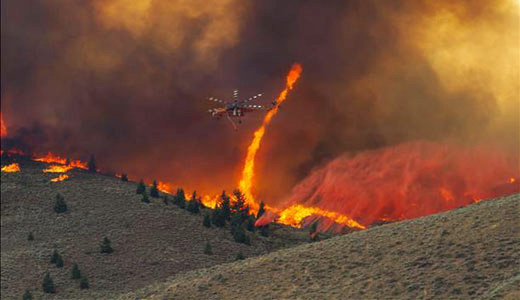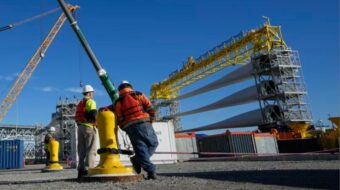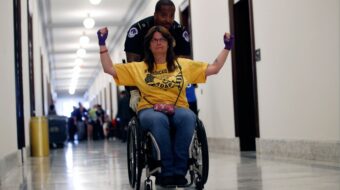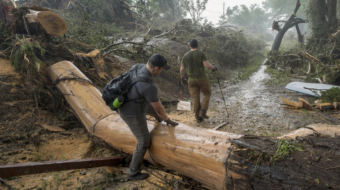
The 104,000-acre Beaver Creek wildfire has been appropriately described as a “beast.” It is currently winding its way through parched grasslands and pinewoods, encroaching on Sun Valley, a central Idaho resort community. The blaze, started by lightning, is only nine percent contained – and it’s been burning since August 7. What most of the media is not reporting, of course, is the disaster’s tie to climate change. And as with the other major brushfires that preceded this one, you can be sure there’s a connection.
As of now, about 1,850 homes remain under an evacuation order as the fire is at an “extreme risk” of further growth. High temperatures and strong wind gusts aren’t helping. “It’s been hot; it’s been dry. The vegetation here has been extremely dry,” said Traci Weaver, spokeswoman for the local fire management team. “It’s a perfect firestorm.”
Despite the media’s aversion to associating this with global warming (“the fire was, after all, triggered by lightning,” a detractor might say), a link was nevertheless drawn in a new study published by Michigan State University. The paper appeared just a week into the Beaver Creek blaze, noting, “Climate change may favor larger and more destructive wildfires in the American West in the future.” It’s a statement that’s been made numerous times by everyone from environmentalists to scientists, and all the while, the worsening droughts (which exacerbate the fires) are proving it to be true.
Lifeng Luo, MSU professor of geology and the study’s lead author, remarked, “Our findings suggest that future lower atmospheric conditions may be conducive to larger and more extreme wildfires, posing an additional challenge to fire and forest management.”
The study focused on U.S. states that have, in recent years, been epicenters for wildfires that once occurred on a much less frequent basis. These included Arizona, Nevada, New Mexico, Utah, Wyoming, and Idaho. Although 2012 had the second fewest number of fires in this region since 2000, the study found, August 2012 saw a whopping 3.6 million acres blackened. This means that the fires overall have been fewer, but larger. And as the researchers concluded, wildfires will continue in this fashion.
Carl Albury, a worker with the U.S. Forest Service, added, “A 100,000-acre wildfire used to be unusual, you would see one every few years. Now, those types of fires are becoming a yearly occurrence.”
As a Think Progress article elaborated, “history speaks for itself. The seven largest U.S. fire seasons since 1960” have all occurred within the space of the last 13 years.
Unlike their larger counterparts, local news outlets did, at least, acknowledge the obvious climate change connection: “A generation of firefighters has faced conditions their predecessors never imagined,” said the Idaho Statesman. “The fires, driven by a warming climate, bountiful fuels, and a growing population living on lands that were once wild, are reshaping the ecosystem and the human communities within.”
As the Beaver Creek fire creeps ever nearer to Sun Valley, it drives home another point: more and more people are being put in harm’s way as housing development expands and moves into risky fire zones. Since the 1990s, the Statesman reported, 15-17 million new homes have been built in such areas. When wildfires reach homes and become “urban blazes,” the problem grows more complex, because once a single house starts burning, that can jump to surrounding homes and overtake even the best of firefighting efforts.
As global warming continues, wildfires in both developed and undeveloped areas will increase in magnitude. According to the Department of Agriculture, the amount of land burned by the fires will double by the year 2050.
As several politicians have reminded people, failure to acknowledge climate change will do nothing to improve the situation. Whether the culprit is a climate change-denying Republican, or a media outlet that chooses not to address the matter, the end result is the same.
Sen. Barbara Boxer, D-Calif., said, “Address climate change. Open your eyes, breathe the air, and see what’s going on. Warmer temperatures combined with long dry seasons have resulted in more severe wildfires, and it’s only going to get worse.”
Photo: A helicopter flies over a large column of fire. KTVB/Twitter










